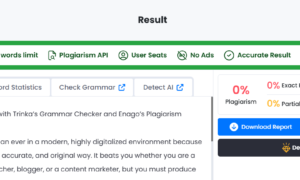The rapidly growing urban population is the major factor responsible for growth of self-adhesive label market. The Asia-Pacific is witnessing a paradigm shift, i.e. more number of people are shifting from villages to the urban regions. As per the UN’s Population Division, the overall population of the Asia-Pacific is expected to reach 5.1 Bn by the year 2050.
At the same time, it needs to be noted that wet-glue labels (the ones where adhesive isn’t pre-applied) are preferred to self-adhesive labels due to the former ones being cost-effective. This factor may act as a restraint to the self-adhesive label market.
The latest trend in this regard is that of manufacturers going for an integrated software platform for every printing device and for all shipping and printing, right from primary to tertiary type of labelling. Persistence Market Research has entailed these findings with insights in its latest market study entitled “Self-Adhesive Label Market”.
How is the Self-Adhesive Label Market categorized?
The global self-adhesive label market, by type of label, spans removable and permanent. By type of face material, it’s plastic and paper. By end-use, it’s pharmaceuticals, food & beverage, tracking, logistics and transport, home & personal care, consumer durables, and likewise. Out of these, permanent labels hold the largest market share taking into consideration moisture, temperature range, UV exposure, and frequency of contact with chemicals. Persistence Market Research has highlighted these details with insights in its latest market study entitled “Self-Adhesive Label Market”.
Region-wise?
North America and Europe are going steady with respect to self-adhesive label market. However, the Asia-Pacific is expected to grow at the fastest rate in the self-adhesive label market due to growth in healthcare and packaging verticals in India, China, South Korea, and Japan. China is second-seeded, as far as packaging vertical is concerned. In the past few years, the FMCG sector has grown at a noteworthy rate. This could be attributed to increased spending related to healthier and premium products by the working class. India holds the distinction of being the fifth-largest country in terms of packaging. This packaging vertical is basically accelerated by innovation creeping in. Cosmetics is another sector witnessing tremendous growth. Persistence Market Research has given these details with probable calls to action in its latest market study entitled “Self-Adhesive Label Market”.
From the Competitors’ Desk
Persistence Market Research has profiled the key players in self-adhesive label market as Lintec Corporation, Avery Dennison Corporation, Thai KK, UPM- Raflatac, PMC LABEL, Fuji Seal International, Inc., CCL Industries, Symbio, Inc., and likewise. It has gone further with mentioning ab out the latest developments. For instance – Multi-Color Corporation, in October 2021, did acquire Hexagon Label Group in ANZ with the objective of tabling appropriate label solutions in Brisbane, Adelaide, Melbourne, Griffith, Perth, Christchurch, Auckland, and Sydney.
Persistence Market Research has gone ahead with mentioning about Lintec acquiring every share of Duramark in April 2021 to expand its portfolio of adhesive films and papers for labels. CCL Industries, in March 2020, did announce an investment of US$ 35 Mn in coating technology for expanding its Fasson Roll North America pressure-sensitive base materials operations in Greenfield (Indiana). Around the same time, Hungary-based Plasztik-Tranzit Kft was acquired by Coveris. The newly formed company is operating under the label “Coveris Pirto”. The basic objective is that of creating a centre pertaining to high-tech production in Eastern Europe and boosting manufacturing capacity of Coveria Holdings in end-markets like food and medical.
The Future
The global self-adhesive label market is likely to grow at a substantial rate between 2021 and 2031 – Persistence Market Research
For In-Depth Competitive Analysis, Buy Now @https://www.persistencemarketresearch.com/checkout/3536



































